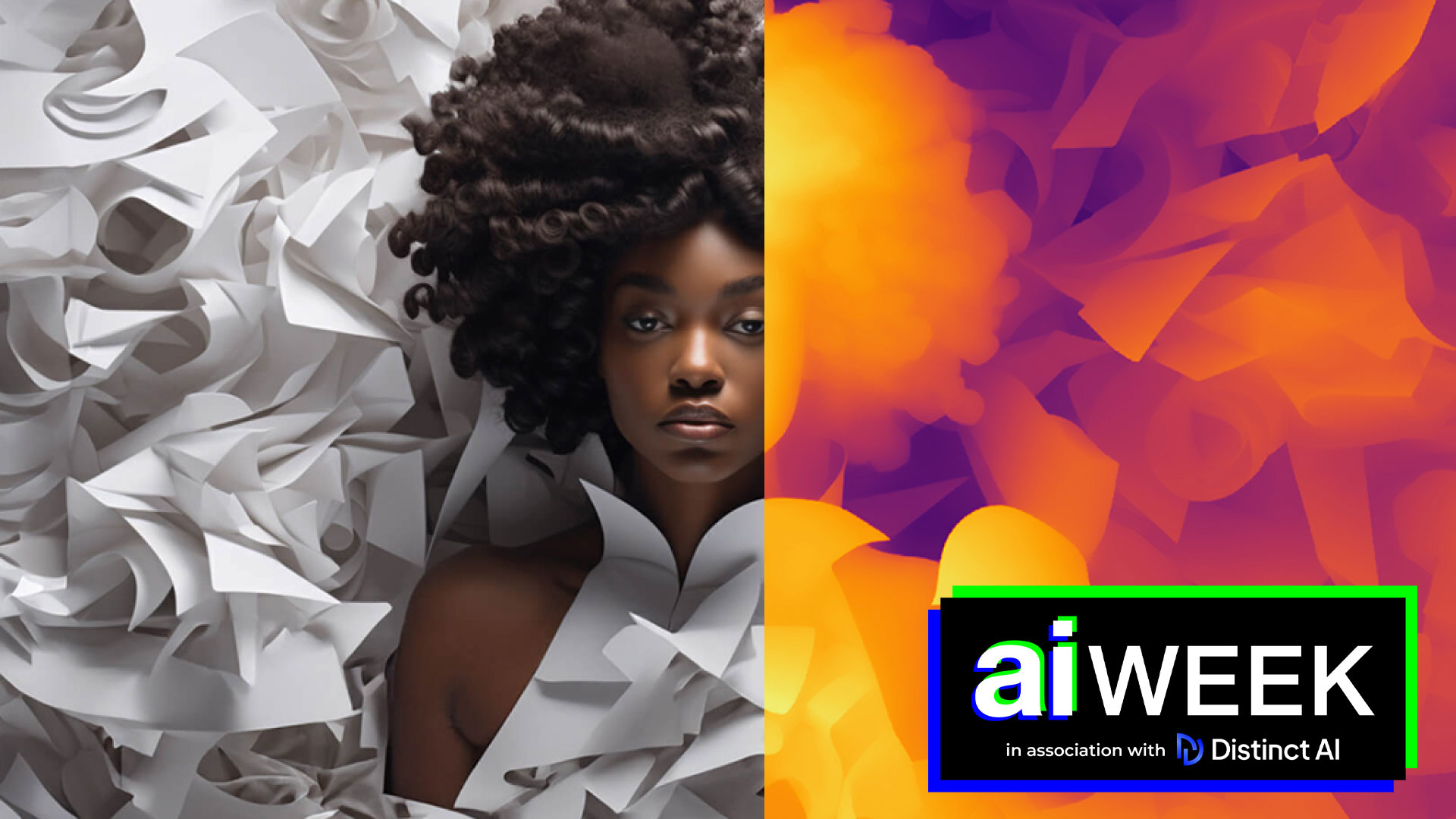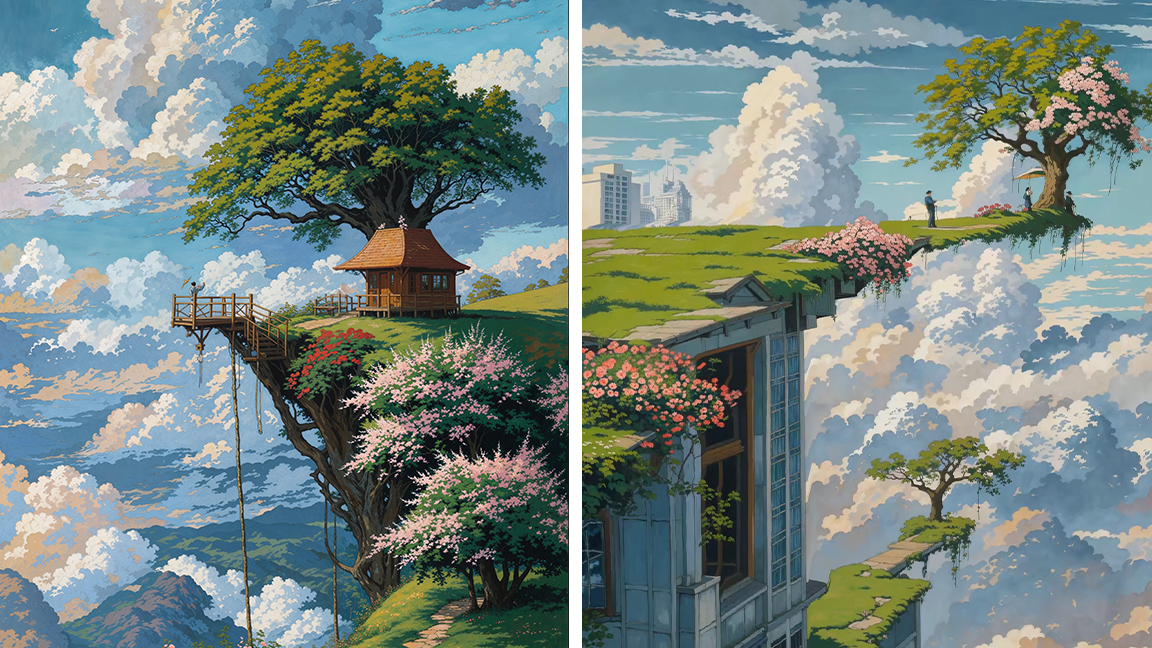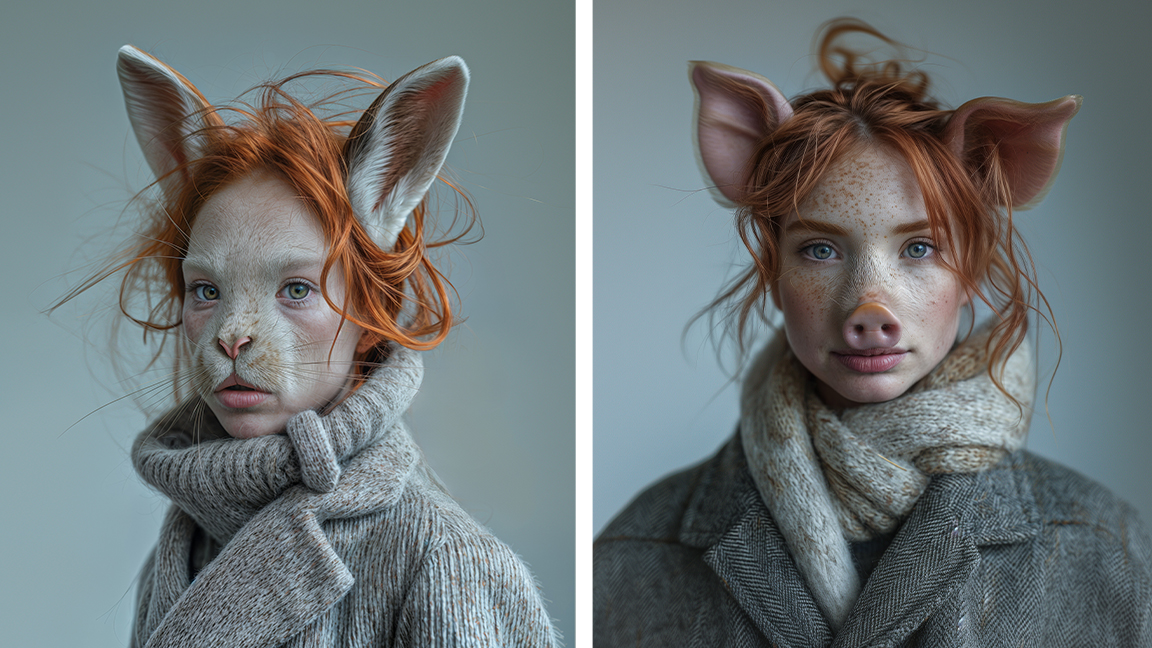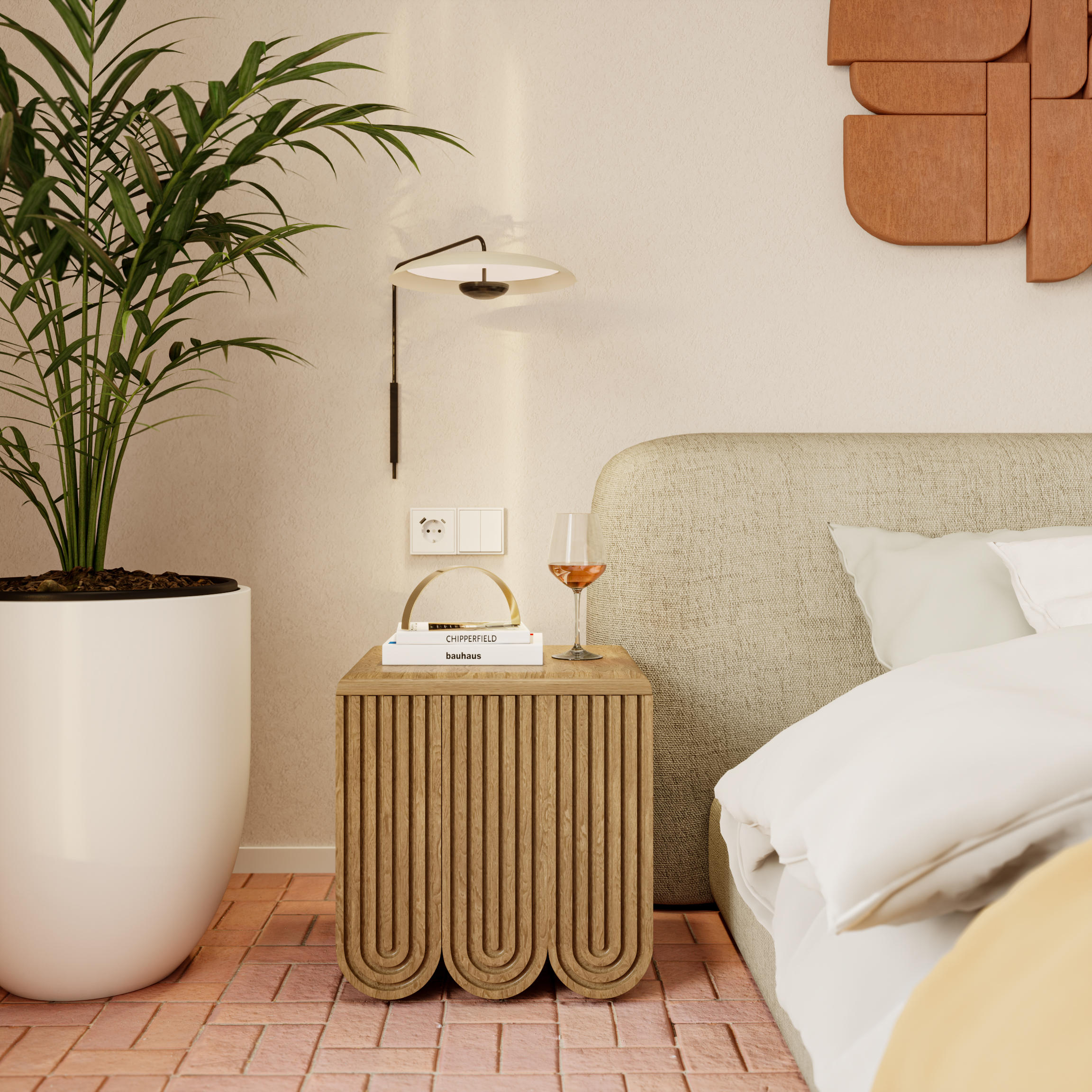
Working out ways to bring AI tools into your workflow is one of the most current dilemmas facing many digital artists. As Martin Nebelong argues in his opinion piece on 'AI art is only a threat if we let prompt-jockeys take control', learning ways to make AI work for us and not replace us is crucial.
One of these new AI tools that can be a useful addition to your workflow is Immersity AI (formerly LeiaPix), which quickly turns 2D illustrations into 3D animation, ideal for bringing a sketch, painting or scene to life. Immersity AI is akin to turning your 2D art into short animations that simulate the motion of a 3D camera moving through an image using next-gen depth maps.
So who is LeiaPix for? The idea for creating the platform is to enable non-3D users the chance to give their 2D art a new level of depth, and offers a glimpse of how art can be experienced in VR. It's an ideal way to get images into AR and VR, such as the best VR headsets, including Apple Vision Pro and Meta Quest 3.
Who's Immersity AI for?
"The version that’s available today was designed with a broad audience in mind, from photographers and film-industry professionals to hobbyists and digital creators who want to add depth, dimension and emotion to their work," says David Sitbon, director of Immersity AI. "In short, if you want to turn a flat image or video into something more engaging with some wow factor, Immersity AI is for you."
The app features tools to enable you to zoom, pan and even dolly shots with an instant preview to test how your animation will look ahead of final render. The pitch is, Immersity AI is a quick way into 3D animation for 2D artists making it a tool anyone can use.
"We want to change the perception that the emotion unlocked through 3D content, due in large part to the sense of immersion created by depth, is only for the highly skilled or those with access to expensive software," shares David. "Naturally a 3D experience can’t be replicated on a 2D device, but the platform can give everyone a taste of it, regardless of the type of device they’re using and making it an accessible option for anyone looking to elevate their digital content."
David says Leia Inc, the company behind Immersity AI, takes an ethical view of how AI tools are developed and used, and AI system has been "grounded in ethical principles, such as using our own data set for training".
If you want to turn a flat image or video into something more engaging with some wow factor, Immersity AI is for you
David Sitbon, director of Immersity AI
You can find the company's rights and privacy policy on its website David says: "We're aware of the power of AI and the importance of using it responsibly. This means being transparent about how our technology works, respecting users' control over their content, and making best efforts to manage proper use. For us, it's crucial that Immersity AI remains a tool that supports creativity and innovation without compromising ethical standards."
I've tried Immersity AI myself and was taken aback by how good the 3D animated results were, although at around five seconds these are short and illustrative. Just to make sure I wasn't being blindsided by the new AI tech, I caught up with a group of artists who have been using the tools and testing the capabilities of Immersity AI (when it was called Leia Pix).
Immersity AI in use: Max Larsson

Max Larsson, who is known as @Visionart.AI, has has been working as a cinematographer for over 15 years, and has been testing AI art tools since 2022. "Since then, I've delved deeper and deeper into the rabbit hole," he tells me, adding: "I'm fascinated by the boundless possibilities it offers for bringing imagination to life."
Max says he's been using AI because it can bring to life his visual concepts and draws inspiration from the places he's visited as a cinematographer. "The ability to craft worlds blending nature and anime has been an incredibly rewarding experience," he says.
Max has used a number of AI tools, but says Immersity AI "stands out remarkably" as he tells me he's not seeking a tool that drastically alters his images or causes them to move excessively from their original form. Instead, he says, "What I appreciate about Immersity AI is its ability to animate images in a subtle and natural manner, bringing them to life in a way that resonates with me. […] I've found that Immersity AI adds an amazing dimension to my 2D stills, bringing them to life in 3D".
Max tells me the Immersity AI's Perspective animation style with the loop option enables makes engaging short reels. But when it comes to taking more control Max advices using the free export option to preview animations before committing to a final 4K version, saying: "Each image is unique. Factors like foreground obstacles or the overall background composition vary greatly and require careful consideration while adjusting settings."
It's worth noting Max is a committed AI artist, and tells me his 'toolkit' consists of Midjourney, Stable Diffusion, Photoshop and Magnific.ai (for upscaling). Immersity AI is used to get a unique 3D feeling. He's also aware of the controversy around some of the AI models he uses, but argues "AI technology is here to stay, and it's all about understanding how we can harness its potential".
He continues: "While some in my industry express concerns about tools like OpenAI Sora, which was recently teased, I and several colleagues are enthusiastic. We perceive it as presenting fresh takes into filmmaking and artistic journeys, bringing about possibilities we've yet to explore."
Immersity AI in use: Phil Langer

Artist Phil Langer is more of a conventional digital artists seeking ways to create new kinds of images. He uses several AI tools to create art, including Midjourney, krea.ai, Runway and Pika Labs, as well as Immersity AI. His generated 'assets' are then taken into Adobe Photoshop and After Effects.
Like many artists Phil has an issue with how AI datasets have been created, "it's definitely problematic," he says, sharing how he feels there should be a system for artists to be compensated. However he believes AI is here to stay and "Creatives need to experiment with it and find ways to incorporate gen AI into their work, or they will be left behind. As I see it now, gen AI is a tool. Without an idea or creative spark, the content you create will be as meaningless as traditional art without an idea."
Before Immersity AI launched he was already experimenting with ways to achieve the same 3D animated results from 2D images, by using 3D depth maps created in Photoshop to enhance his still images in After Effects to create short videos - "thus creating the illusion of 3D motion," he says, adding: "I discovered Immersity AI by accident and used it to generate high-quality depth maps, which worked much better. It was amazing."
Phil tells me the camera controls in Immersity AI has meant he can generate the motion images directly on the platform, and tells me this "was a game-changer" and sped up his process tenfold.
While there remains a controversy around AI art apps like Immersity AI are slowly changing the the tools are seen and used. Phil explains: "My fascination with generative AI began when I recognised its immense potential for creativity and its capacity to revolutionise my industry. I am constantly driven to push the boundaries of realism and explore new avenues for creating impactful content, aiming to evoke emotional reactions in people, even when it's artificially generated."
For Phil the advantage of Immersity AI is the ability to create motion from static images in a fast and simple way. But there is a limitation, he says: "What’s missing is a way to create motion on the subject or a way to combine a static video with a perspective shift from Immersity AI."
Immersity AI in use: Sanjaya P
Someone else who has discovered Immersity AI is Sanjaya Parthiban, an interior designer based in Italy who specialises in 3D visualisation, creating photorealistic renders for clients. She tells me, "The thing that inspires me the most is how an idea visually comes to life using the right combination of creativity and technology".
She explains the background to why an AI tool that can animate 2D images is interesting for her professionally. She says, "As an interior designer who is also a 3D visualiser, I always feel that animations and videos often have a higher visual impact compared to static images in capturing a person’s interest in the design. So, I feel using results produced from this would help in marketing my designs to a larger audience".

Sanjaya has tried AI animators before with limited results, but was impressed with Immersity AI. "It was intuitive to use and had greater control in tweaking the animation to get my desired outcome," she says.
She tells me experimenting with the app's manual controls, such as the depth map editor, camera positioning and movement to adjust camera positions has impressed her. "It was one of the features that I liked about Immersity AI, the way that it allows users to have more control. I feel the key lies in selecting the right image to begin with and to have an idea of what results you would like to have at the end," she says.
Immersity AI in use: Benjamin Benichou
Benjamin Benichou says he's beem a creator for "as long as he can remember" and tells me he's a seasoned creative director who has worked for huge brands, including Nike, Addidas and ASICS. "It was only recently that I carved out a space to craft art for myself, using technology to meld my creative vision and tell visual stories that fuse together the impossible or, at least, the unexpected, to forge entirely new concepts," he says.
He tells me he was "thrilled" when he tried Immersity AI as it enabled him to give his work more impact, particularly on social media where a split second to get noticed is vita. Using Immersity AI (or LeiaPix as it was called) enabled Benjamin to reach a wider audience.
The AI app is "now fully integrated into my workflow along with other technologies," he tells me. "I'm also excited about using it in public space installations with large-scale videos. It can help recreate a truly immersive experience beyond the confines of a mobile phone."
Inspired by @gucci - Made with AI• Midjourney 6 + @magnific_ai • AI Motion with @leiainc #LeiaPix pic.twitter.com/CHh2vHsgNCFebruary 7, 2024
It takes skill to create amazing content even with AI, but just like I used 3D rendering software
Benjamin Benichou
He tackles the issue surrounding AI art head-on when I ask if there's a place for controversial tools like this in art, saying: "AI in art is definitely a contentious subject, but I don't label myself as an 'AI Artist'. I'm a visual artist who uses AI in my process, and I have no intention of stopping anytime soon.
"Technological innovation allows me to create more freely without being limited by my own skills. Of course, it takes skill to create amazing content even with AI, but just like I used 3D rendering software because I didn't see the need to learn sculpting by hand, I view technology as an enabler. Without human ideas, concepts, and storytelling, it doesn't amount to much on its own."
In keeping with his approach, Benjamin shares his art software, which includes everything from Photoshop and Figma to Midjourney, Stable Diffusion, Magnific and more. He explains, "I believe even for a 2D artist, using tools like Immersity AI can result in fascinating outcomes and a more immersive experience".
AI art tools keep being released so learning how to fit them into your workflow could be important, but let's not forget the issues surrounding AI: read our interview with illustrator Kelly McKernan who reveals how AI is affecting her, as well as Martin Nebelong's view that AI and human creativity has a future.







